Listening bars are on the up – there’s less chatting, more listening... and a little discomfort
Nighttime is not always best for attentive listening – but when you hear a record in detail, you can feel lunar tidal pull of music and the physicality of the people making it, says Ben Ratliff
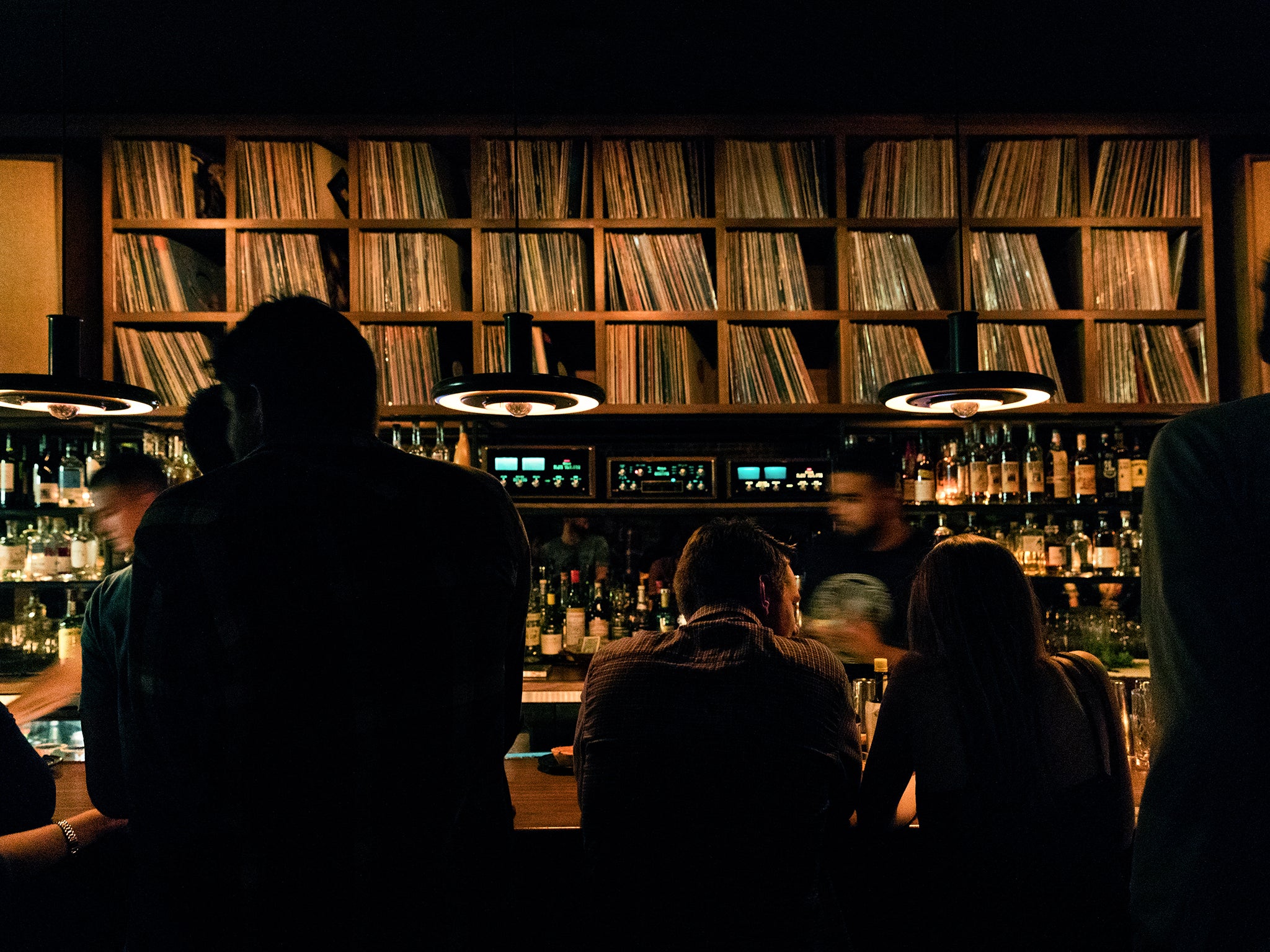
Your support helps us to tell the story
From reproductive rights to climate change to Big Tech, The Independent is on the ground when the story is developing. Whether it's investigating the financials of Elon Musk's pro-Trump PAC or producing our latest documentary, 'The A Word', which shines a light on the American women fighting for reproductive rights, we know how important it is to parse out the facts from the messaging.
At such a critical moment in US history, we need reporters on the ground. Your donation allows us to keep sending journalists to speak to both sides of the story.
The Independent is trusted by Americans across the entire political spectrum. And unlike many other quality news outlets, we choose not to lock Americans out of our reporting and analysis with paywalls. We believe quality journalism should be available to everyone, paid for by those who can afford it.
Your support makes all the difference.At 9.30 on a recent Monday morning, I parked on East Fourth Place in the downtown arts district of LA, between Skid Row and the Los Angeles River. I walked into a kind of glass vestibule, then opened a door into the half-light of In Sheep’s Clothing, a listening bar. I was returning for a second visit, at an unpopular hour, because I hadn’t grasped its purpose at a popular one.
Listening bars – cafes with high-end audio equipment, where patrons listen to vinyl records, carefully selected by a bartender, from a record library behind the bar – have been an institution in Japan since the 1950s. They are a subset of the kissaten, the small and idiosyncratic coffeehouses dotting side-streets in Tokyo. Only recently have several emerged in New York City, Los Angeles and a few other places. Shakily, a culture and a lore are growing, of connoisseurship and grace and obsession.
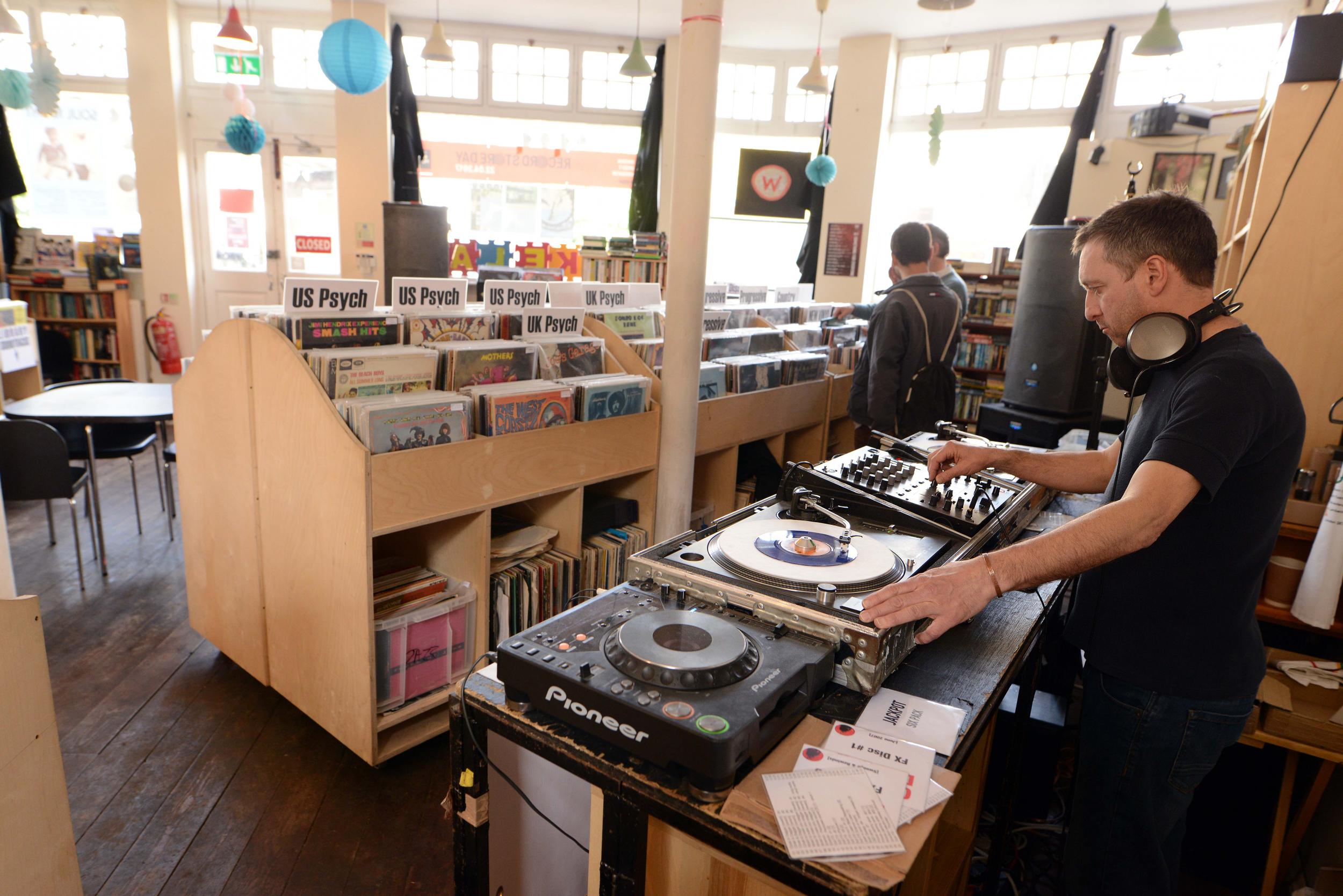
At this early stage, the American listening bar (sometimes called a hi-fi bar) remains a social experiment, because a bar is still generally understood as a place to talk, not listen. Recorded music is a compulsory extra, but is generally ignored or appreciated in flickers. Even those who know something about the purpose and origin of the listening bar may not be ready for it.
At best, the listening bar raises good questions about whether there might be an unrealised public listening ideal in a ritual as familiar as going out for a drink. At worst, it’s pretty much like a regular bar, but with a trowelling of extra noise provided by an obscure record you’re not hip enough to know, played on equipment you’re not rich enough to own, in a room that does not accommodate dancing. It can be hard to talk, much less to listen.
I’ve been dropping in to several places to see what I thought – particularly In Sheep’s Clothing, where I had the best experiences overall, but also Public Records in Brooklyn, Tokyo Record Bar in Manhattan and Gold Line in Los Angeles. (Other well-known listening bars outside Japan include Bar Shiru in Oakland, California, and two in London: Brilliant Corners and Spiritland.)
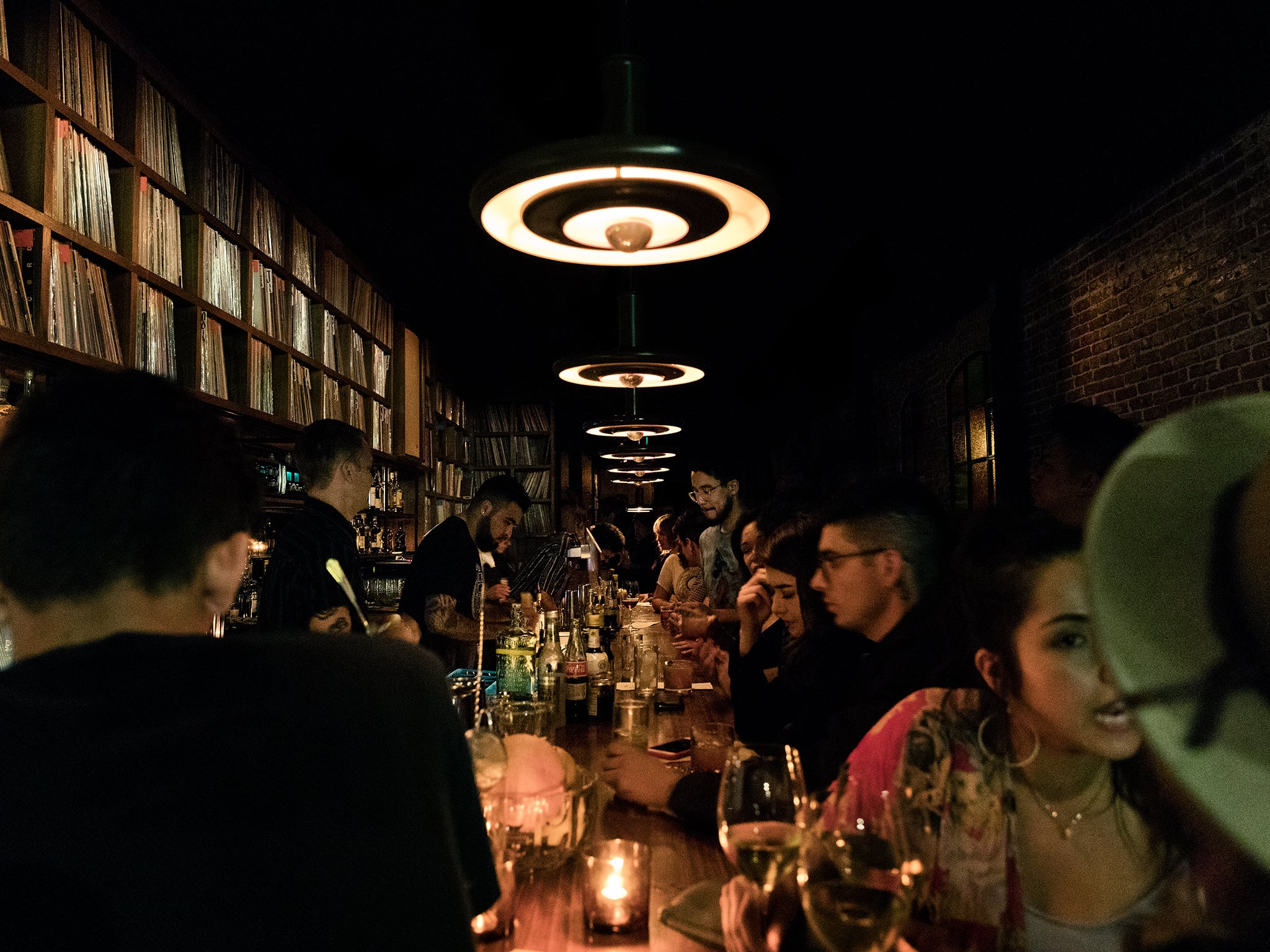
The meticulousness about sound and gear extends to the menus. Tokyo Record Bar has a judicious sake list with a flavour-profile colour-wheel on its menu; In Sheep’s Clothing serves sake as well as wine, rice whiskey, beer and mezcal. At Tokyo Record Bar, you can eat, too, even when it switches from a small-plate dinner menu to a more casual DJ setting after 10:45pm, with oysters, sashimi and bar snacks. But the most important items in both places are the turntables, tube amplifiers and speakers.
Most proprietors of the American listening bars are candidly inspired by the kissaten, with their individually defining special interests – jazz, classical, noise and drone music, and so forth. (To a lesser extent, they draw inspiration about the ethics and philosophy of listening, and about specific audio gear, from the New York DJ David Mancuso’s loft parties in downtown Manhattan in the Seventies and Eighties.) In Sheep’s Clothing is particularly indebted to the model of Lion, in the Shibuya district of Tokyo, where patrons sit in pewlike seating and classical records have been played, entire sides at a time, with almost ritual care for quiet patrons since the 1950s.
Most listening bars in the US spotlight the DJ to some degree, and are open only in the evening. In that respect, In Sheep’s Clothing, which opened last August, is an exception to two general rules. Here the DJ is basically anonymous, and the place – about 1,000 sq ft, sparsely lit and wooden-walled, with 12 tables – is open all day.
On the Monday morning I visited, the barista put on the first side of “Now That Everything’s Been Said”, the 1968 record by The City, Carole King’s short-lived LA folk-rock band. (He was using a Garrard, an audiophile turntable, not a DJ turntable: you can’t wind a record backward on it.)
There were two other customers. I sat turned away from the bar, at a table facing the two speakers on the floor – old Klipschorns, the size of modest refrigerators. “Please keep your conversations below the music,” read a small folded card on each table. “To hear more, say less.” The coffee was good, and the music was fully present but not exactly loud. The vibe felt like a lunar tidal pull.
That City record was a good entry point. I had heard it; it lies somewhere between the Brill Building songwriting discipline and hippie looseness, on the way to something it hasn’t found. But here I really heard it. I understood something about the tactility and enlivening qualities of sound better than ever before: sound can be a three-dimensional space in which to put your body, and in which your body may be acted upon and opened up, even when you are sitting still. I seemed to understand the physics of it: tones as standing waves, and me in the middle of them, one of them. Or, if you prefer the language of another sense, it was like seeing colours after knowing only greys.
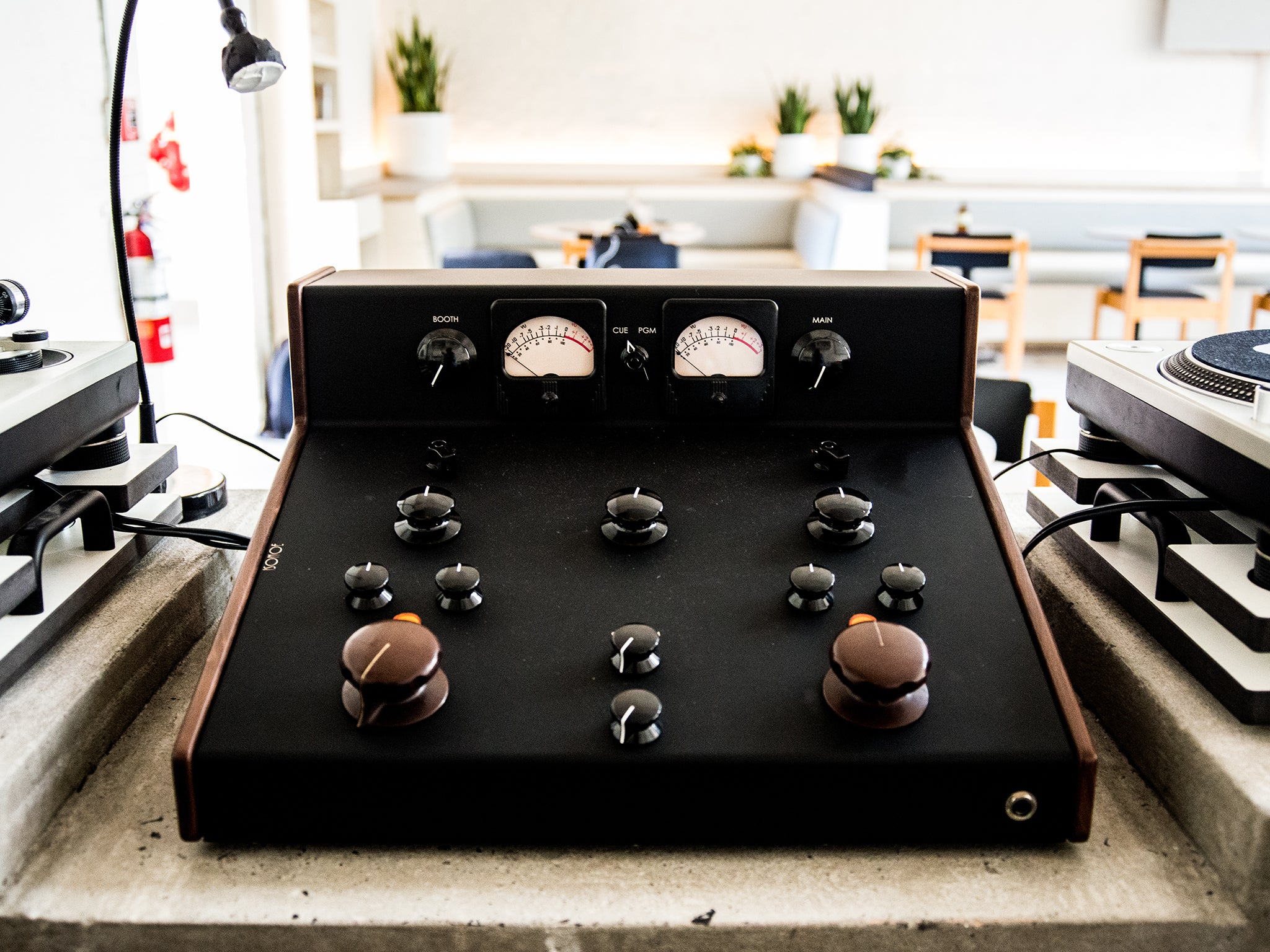
As a natural consequence of hearing in that detail, I could also sense the physicality of the people making the music – their throats, hands, reflexes, sensibilities. While listening to that record, I felt, let’s say, that I knew Carole King’s mother.
I had to leave after an hour but wanted to stay for two or three, and returned a couple of months later to do that, sitting at the same table at various other times of day – 10am, 2pm, 4pm, 9pm – to figure out how the day works there. The room is fitted with institutional furniture from the Seventies, from a two-top table to an eight-top, crescent banquettes and schoolroom chairs.
There are tall potted plants and tables with neat stacks of books mapping out the bar’s musical aesthetic: John Cage’s Silence, Chris DeVito’s Coltrane on Coltrane, Steven Isoardi’s The Dark Tree: Jazz and the Community Arts in Los Angeles. The room’s goldenrod curtains stay drawn, and its interior is unremarkably brown enough that you can turn your attention to the spectacular thing going on before and around you, which is sound.
During daytime hours, with not too many other people there – some screenwriters at their laptops, some bros holding a real-estate meeting, couples on dates – I had similarly strong experiences with Charles Mingus’s “Mingus Plays Piano”, French folk singer Emmanuelle Parrenin’s “Belle Virginie”, and the ice-cream minimalism of Seigen Ono’s self-titled first album.
None of these records have ever been hits or canonical; they’re all off to the side. Sometimes, here, off to the side can become predictable: you could begin to discern an index for newly unearthed hits of outsider-electronic or crypto-New-Age or imaginary-vernacular music – often things recently unearthed by chic reissue labels: Richard Horowitz’s “Eros in Arabia”, Laurie Spiegel’s “The Expanding Universe” and most of all, Hiroshi Yoshimura’s ultraminimal “Nine Postcards”, which is to In Sheep’s Clothing as “Crazy In Love” or “Start Me Up” is to a sports bar. Stay long enough and you will hear it.
As with any listening bar, you can find snob appeal at In Sheep’s Clothing, if that’s what you want. But an experience with sound in a properly immersive way erases the problem of records as background decor or as fetish objects.
There are about 600 records behind the bar – 200 for day, 400 for night. Zach Cowie, the bar’s creative director, told me a bartender can pretty much put anything on at the appropriate time of day and it’ll work; you’re always hearing Cowie’s ideas about music, which tilt towards introspection. The range is pretty capacious, but will likely catch you with something you didn’t know.
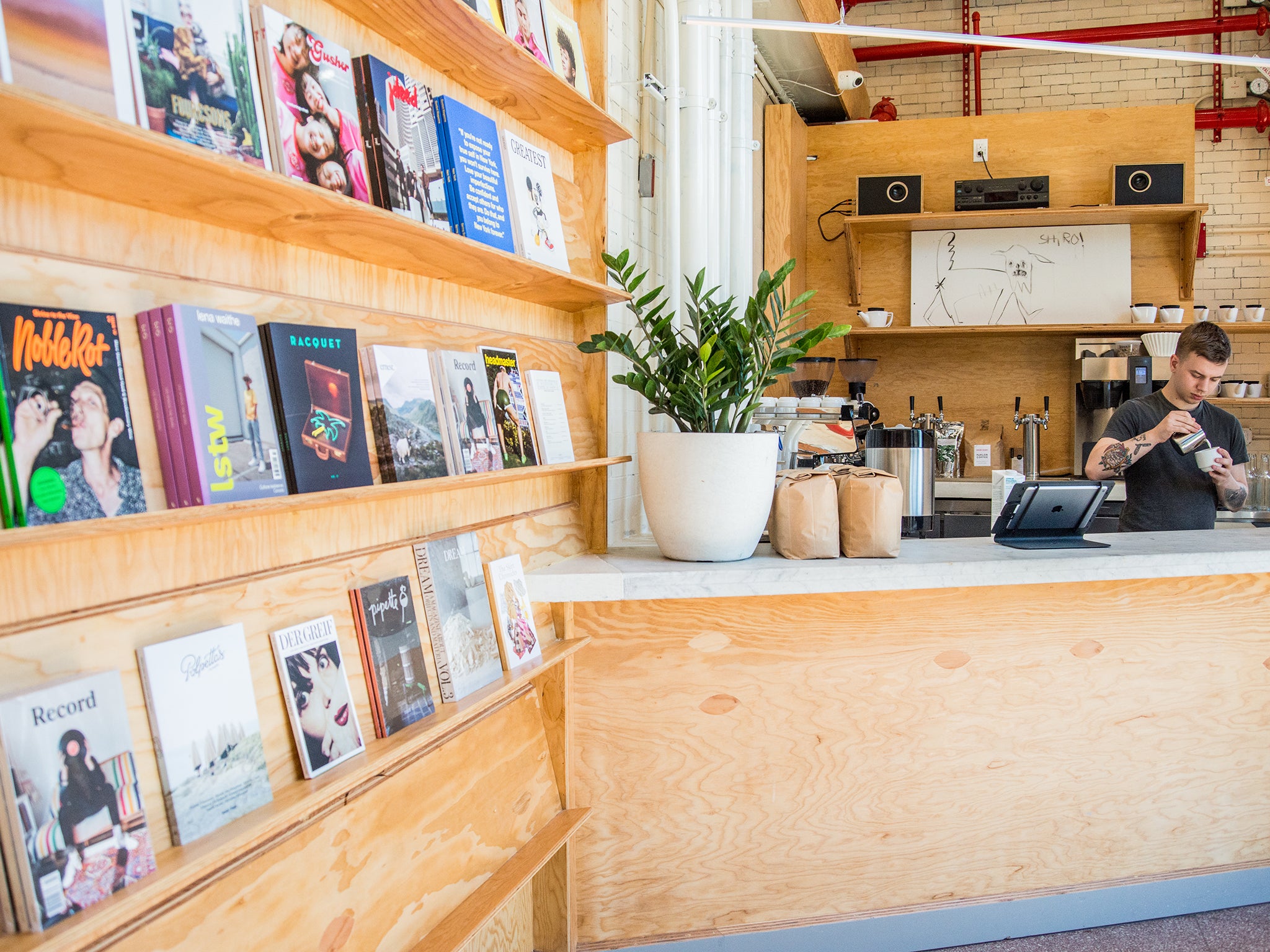
Cowie pays attention to the quality of pressings, and allows in the bar’s collection only reissues transferred from original analogue-tape masters, as opposed to vinyl records made from digital masters, which are essentially CDs on vinyl. This means that the inherent continuity in the analogue process (as opposed to the chopped, discrete soundwave in digital) travels all the way: from the original recording technology through the storage medium through the playback gear, and then even through the purposeful, undistracted way the record was put on by the bartender that Monday morning, whose name was Dane. (I asked, as one would ask a park ranger on top of a significant mountain.)
Before putting the record on, he cleaned it with a Hunt EDA record brush, then let it run for a full side, as per the practice at Lion, from beginning to end. That act could be described as analogue, too – as is any conscious move towards continuity.
Cowie’s day job is as a music supervisor for films and TV shows, including Master of None and Forever. He has a vested interest in smuggling great music into people’s lives; he wants to surprise them and discreetly expand their frames of reference. I asked him to diagnose my experience with The City record.
Across a couple of days, we talked about unplugging, records as gateways, the possibility of a self-governing quiet place for listening, the depressingly appeasing quality of algorithmic choices, the stimulation of curiosity. And finally, he told me: “That was your first time hearing a single-ended triode amplifier through a pair of very efficient loudspeakers.”
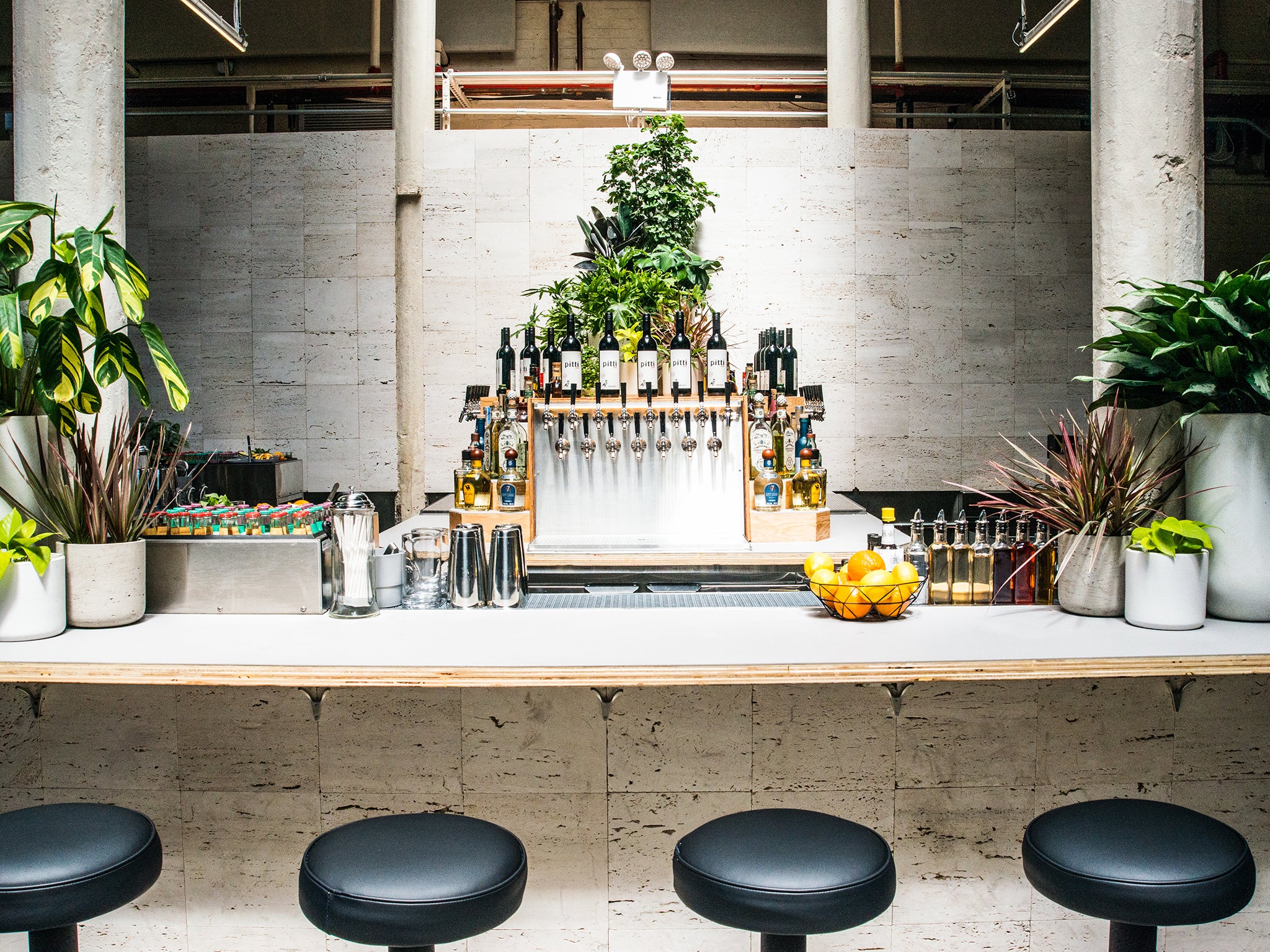
“Efficient” means the speakers don’t require a lot of power to be very loud. And his diagnosis may well be correct. But you don’t have to know any of that, really, and Cowie or Dane or whoever else won’t tell you unless you ask.
Vinyl records these days amount to one of two extremes: either dusty, embarrassing garbage or advanced-level consumables. If a record isn’t something so valueless you can’t give it away, it’s the signifier of taste and an ambitious, highly tailored social life. To turn that social life into a business, in a town like New York or Los Angeles, can easily result in a situation in which elite whiskey and Instagram moments are more important than communicative potential of the records themselves.
This is why In Sheep’s Clothing remains a work in progress. Sometimes the waiters shush people. It doesn’t always go down well. (I didn’t see it happen while I was there, but read Yelp for some accounts.)
It is a listening place, not a DJ place. Spiritland, Brilliant Corners, Gold Line and many others let the visiting DJ rule the spot; Gold Line requires that DJs use its library of 8,000 records behind its bar, which have been collected by Chris Manak, aka Peanut Butter Wolf – the DJ, producer, supreme record-collector and founder of the record label Stones Throw, whose offices are next door.
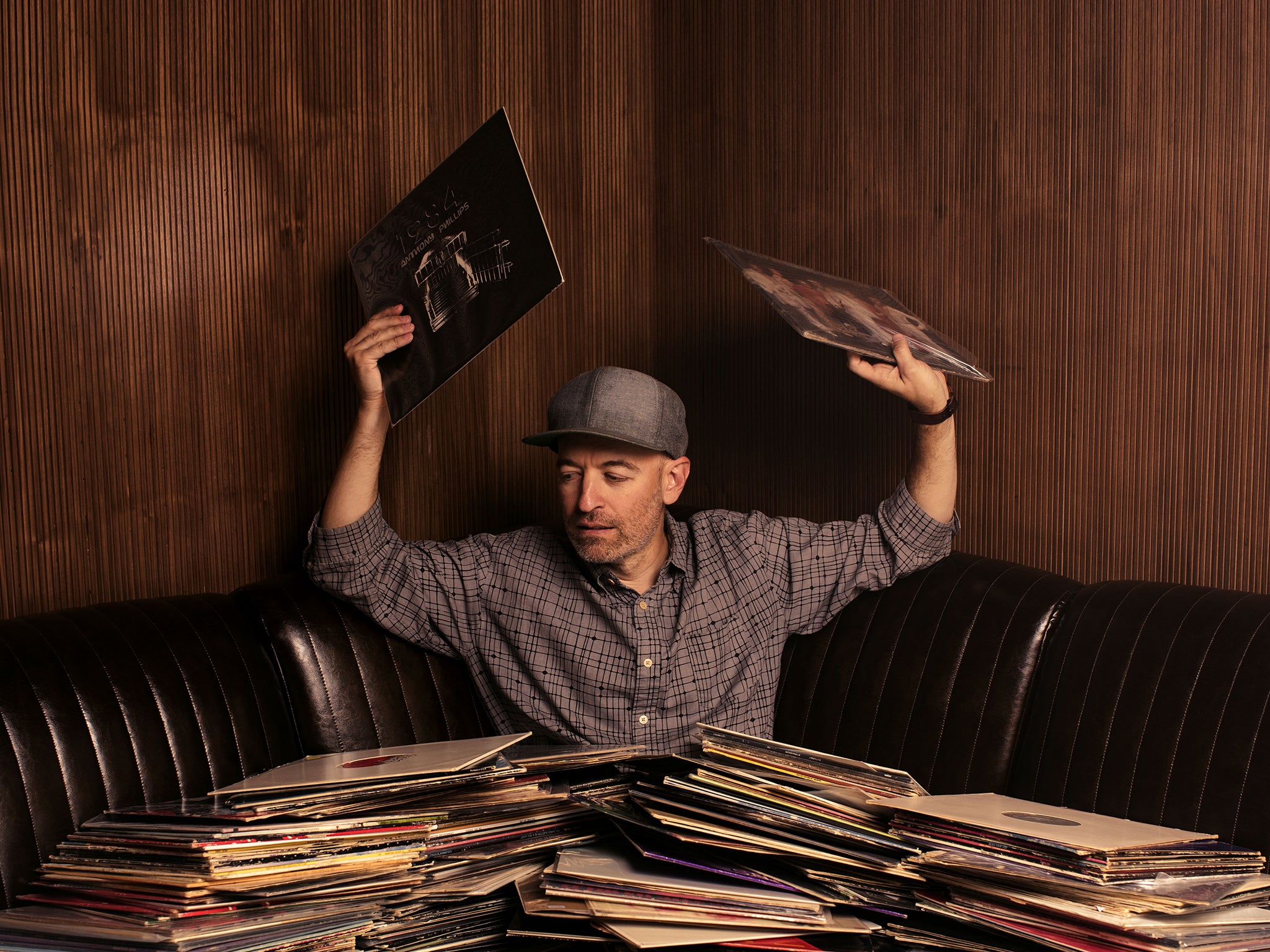
I love DJs: they comprise about a third of my living heroes. But when you remove their star power from the equation, which is precisely the situation when the waiter at your cafe or bar is putting on the records, you are forced to confront the music. The website for In Sheep’s Clothing has no information about guest DJ appearances, and no pictures of the bar, just facts about its sound setup. It looks like the tech specifications on a band’s contract rider.
A cafe – and most bars, for that matter – should be as good a place to be alone as with friends, and In Sheep’s Clothing does not make it hard for you to be alone. It is not like a hi-fi shop or an elite record store. No cryptically insecure male proprietor cut me a withering look. Nobody bothered me, and I was not subjected to advertising. I didn’t pay a cover charge or do anything more compromising than eat breakfast.
I did not experience the usual American cafe-feeling of needing to be productive. In fact, I wondered whether this represented the best possible use for cafes: a total break in your waking hours. A cleaned window. An open window!
Nighttime, on the other hand, is a different story. My first visit to In Sheep’s Clothing had been late on a Friday, with friends. The room was full. I was stunned by the first song I recognised: Caetano Veloso’s “Jóia,” just multitracked voice and percussion, a poem juxtaposing modern and preindustrial Brazil. What kind of bar plays something so calm and spacious and unresolving during party hours?
I talked to my friends loud enough to be heard, because everyone else around us was doing the same, and I had a nice drink (an amaro nonino), and I don’t remember much about listening.
On another night visit, more astonishing music: Joe Henderson’s The Elements, Kraftwerk’s Autobahn, Gil Scott-Heron’s Pieces of a Man. But my friends and I were talking about whether we believed in magic, which naturally became the focus of the evening. A guy at the table next to ours, out with his pals, left looking defeated – he’d had an argument with his wife earlier that night and he really wasn’t up for sitting still and letting the music work on him.
I understand. Night is dynamic and complicated: so complicated that it turns great record collections and stupendous sound systems into background. If a listening bar is open during the day, you’d be crazy not to go there then. By all means, come back at night with friends. But you may not reap the full promise of the place, the reason it exists at all.
© New York Times
Join our commenting forum
Join thought-provoking conversations, follow other Independent readers and see their replies
Comments